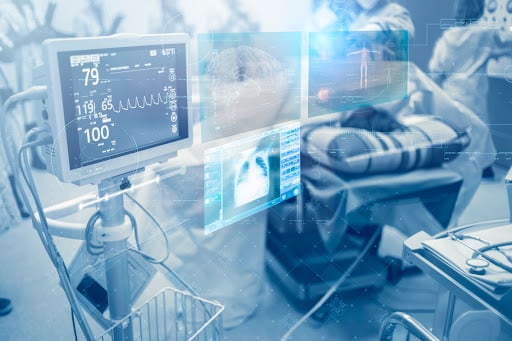Maintaining things is a natural part of our lives. We take our cars for oil changes, brush our teeth for dental health, and tidy up our homes occasionally. The act of maintenance is so ingrained in our daily lives that we don’t give it much thought. But imagine what could happen if we stopped maintaining these things? Our cars might break down and leave us stranded, our teeth might fall out, and our homes could become a mess.
Maintenance is essential, and this is especially true in a healthcare setting. Providers are required to maintain their facilities, supplies, and equipment to ensure an acceptable level of safety and quality for patients and meet industry standards for inspection. But what are these levels and industry standards, and how difficult are they to maintain? Join us as we explore the importance of healthcare equipment maintenance logs and their critical role in maintaining high patient care and safety standards.
Medical Equipment Maintenance: Reduce Costs With Proper Tune-Ups
In any medical or healthcare facility, the equipment is costly, most likely needing updating, and its maintenance is sporadic at best. Here’s what you need to know about medical equipment repair and maintenance to understand and relay the value of maintenance logs to your staff.
Preventive and Corrective Maintenance
The two types of medical equipment maintenance are preventive maintenance (PM) and corrective maintenance (CM).
- Preventive maintenance involves scheduled inspections, testing, and maintenance of medical equipment to prevent equipment failures or malfunctions. PM is usually performed according to the manufacturer’s recommended maintenance schedule to ensure equipment functions safely and effectively. PM may include cleaning, calibration, and routine replacement of worn or damaged parts. PM helps reduce the risk of equipment failure and downtime, improving patient safety and reducing costs associated with repairs and replacements.
- Corrective maintenance is repairing equipment after it has failed or malfunctioned. CM is usually performed as needed and may involve troubleshooting, repairing, or replacing parts to restore the equipment to its proper functioning. CM is reactive and often more expensive than PM, but it is necessary to ensure that equipment functions correctly when PM is insufficient or when unexpected failures occur.
The Cost of Medical Equipment Maintenance
The costs vary widely across the healthcare industry depending on the type, age, and complexity of the equipment, as well as the frequency and nature of maintenance required.
Medical equipment maintenance costs are a significant consideration for healthcare organizations, and effective management of these costs is critical for providing quality patient care while maintaining financial sustainability. That’s why adding an equipment maintenance log to your compliance program could benefit your organization.
Why You Need a Healthcare Equipment Maintenance Log
Equipment maintenance logs are vital records documenting the maintenance history of medical devices and equipment used in healthcare facilities. These logs describe the date of service, work completed, and who performed the service. By maintaining accurate and complete records, healthcare organizations can demonstrate their commitment to patient safety and quality care and avoid potential penalties and fines associated with non-compliance.
Compliance With Federal Regulations
Medical equipment is subject to various regulations and standards, such as those from the Food and Drug Administration (FDA), Occupational Safety and Health Administration (OSHA), and the Joint Commission. However, these organizations have all adopted the CMS guidelines. These regulations require healthcare facilities to maintain accurate maintenance records for their equipment. By keeping maintenance logs, healthcare facilities can demonstrate compliance with these regulations in case of an audit or inspection.
Facilities must also maintain records of personnel qualifications, all equipment maintenance policies, procedures, and programs, as well as specific equipment maintenance inventories, activities, and schedules. Finally, facilities must ensure they have documentation of equipment failures, including whether there was harm to an individual.
Be ready for inspections from OSHA, OCR, CMS, and OIG.
What To Include in Your Healthcare Equipment Maintenance Log?
The log should capture specific, detailed information to ensure the proper maintenance and repair of the equipment. Here are some examples of the types of data that you’ll need:
- Equipment identification, including the equipment’s make, model, and serial number
- Record all maintenance activities performed on the equipment, including the date, time, and type of maintenance performed
- Equipment status, including any issues or problems and their solutions
- The names of the individuals who performed the maintenance activities
- Any parts or supplies used during maintenance activities
- Calibration data, the method used, and its results
- Test results, measurements, or readings and their results
- Feedback received from equipment users regarding the performance or any issues
- Write down any identified risks and the activities taken to mitigate those risks
By capturing this data in a medical equipment maintenance log, healthcare organizations can ensure that their equipment is adequately maintained and repaired and that the equipment is safe and effective for patient use. It also helps to identify any potential issues or risks that may need to be addressed and provides a record of maintenance activities for compliance and reporting purposes.
The Path to Compliance Begins Here!
MedTrainer is a leading provider of healthcare compliance training. Our courses cover a wide range of topics — including equipment maintenance logs — and are designed to help healthcare organizations stay up to date with industry regulations and standards.
By taking our maintenance records course, providers can learn about the importance of maintenance logs and how to properly document maintenance activities. This can help you meet compliance requirements, avoid fines and penalties, and most importantly, ensure equipment functions safely and efficiently.
MedTrainer’s courses are also designed to be flexible and accessible, making it easy for staff to complete training on their own schedule. With MedTrainer, providers can be confident that their staff is receiving high-quality training that will help them meet compliance requirements and provide the best possible care to their patients.
Contact us today to learn how we can help you improve compliance and streamline maintenance processes for your medical equipment.

